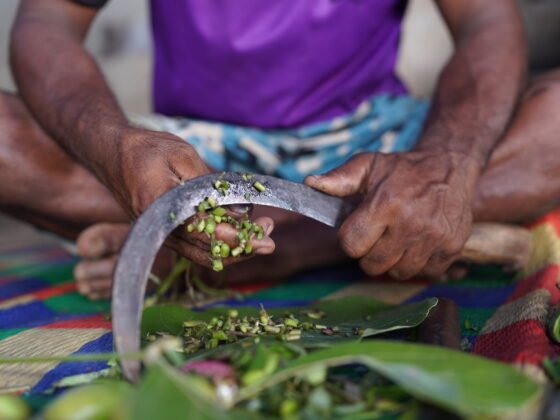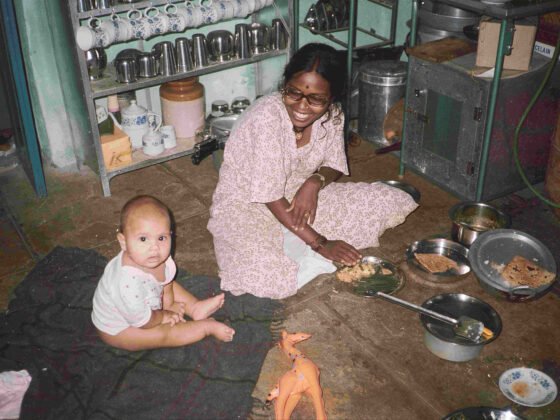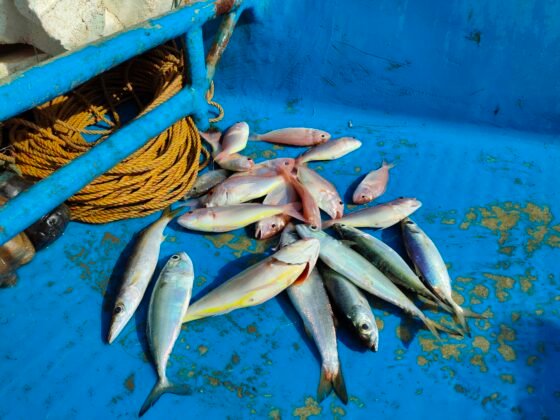The face of the Konkan Fruit Fest, Miguel de Braganza is not only passionate about organic farming, but also committed to nurturing young talent for a food-secure future.
It was on a bright December morning that I went to meet Goa’s very own plant man, Miguel de Braganza, at his residence in Mapusa. As I reached, Miguel was already standing under the canopy of pretty Bougainvillea to receive me. This simple gesture, reflecting his humility, is perhaps one of the reasons that makes him so popular. He is always willing to help out.
A mentor to many young farmers, Miguel—a former agricultural officer—is the go-to person in Goa if you want to convert your farm into a fruitful organic garden.
I first met Miguel around 15 years ago, as a curious young journalist looking to write about Goa’s biodiversity. At the time, he patiently guided me in finding the right sources for my stories, and more importantly, helped nurture my passion for home gardening. Having worked as the Secretary of Goa’s Botanical Society for over two decades, I know he did the same for many other young and old gardeners, farmers, and agro-entrepreneurs.
Sitting comfortably in his home that overlooks an old chickoo tree, Miguel tells me about getting an early start in farming. “I used to assist my father, Jose Miguel Braganaza, in air layering (a method of propagating new trees) a chickoo and lime tree,” he says. “It was an organic process which involved using termite hill mud and coconut coir.”
This practical knowledge led him to pursue his Bachelor’s in Agriculture from the University of Agriculture Sciences, GKVK, Bangalore, in the late 70s. However, he admits to having learnt much more about farming while working at the Zonal Agricultural Office of Bicholim, a mining-dominated taluka in north Goa. Here, he trekked for around four kilometers every day since mining activities had made the roads inaccessible.
His job involved teaching farmers how to use Rhizobium (R. japonicum) when they were planting ‘alsande’—local beans—for nitrogen fixation. In return, Miguel learnt indigenous farming methods from the local farmers. After returning to Goa after a Master’s in Agriculture, he set up the state’s first greenhouse in 1992.
Bringing lesser known fruits into focus
An expert on the fruits of Goa, Miguel has long been passionate about horticulture. Besides conducting research on fruits and plants from Latin American countries, like cashew and pineapple, he has also spent time studying the guava fruit. Speaking about it, he laments that even over a decade ago, it would be rare to find this fruit in markets since it was easily available in one’s backyard. But now, due to shrinking spaces and people living in apartments, the concept of backyard gardens itself is slowly dying.
The fruit that is easily available in Goan households today are mangoes, and like many Goans, Miguel is an ardent lover of the fruit. He says, “We have 100 plus varieties of mangoes in Goa. But because of commercial exploitation, mangoes are now looked at as cash crops, as a result of which in the future, we may have only two varieties—Mankurad and Alphonso. So, householders or home gardeners should focus on other varieties.”

According to him, Mankurad—the most popular mango in Goa—gets the upper hand as it is the first to arrive during mango season. His favourite though is the Hilario variety that comes later in the season (which has also won many awards for Goa). “Hilario is the best mango in India. Its colour, texture, aroma, and juice are excellent,” he states. “But by the time Hilario comes, you are satiated, and unwilling to pay the price even though it’s cheaper.”
For Miguel, it is crucial that these local varieties of fruits are preserved and documented, along with the indigenous knowledge surrounding it. He feels that the older generation understood and appreciated the value of each tree, and the produce it gave. He says, “I remember we had seven seedling mango trees. My aunt, an expert in cooking, made chhepnnetor (mango pickled in salt) only from the fruits of one particular tree. If that tree didn’t flower, then that year, it was just not made. She knew exactly which variety to use for which dish, and when to harvest.”
At present, Miguel is encouraging a young farmer, Rajat Prabhu, to develop a germplasm bank—a collection of live plant matter, in the form of seeds and spores—of local and wild mango varieties.
It should then come as no surprise that Miguel was one of the minds behind the successful Konkan Fruit Fest, which started in 2003. Held usually in the summer, it brings together farmers, home gardeners, agro-entrepreneurs, students, environmentalists, scientists, and even institutes like Indian Council for Agricultural Research (ICAR). “It is a space for scientists to interact with common people in an informal setup,” says Miguel.
The festival has also been successful in bringing into focus lesser known fruits such as jackfruit, soursop, boram or ber (Ziziphus mauritania), Bombay bor or jujube (Ziziphus jujuba), Indian almond (Terminalia catappa), and star apple (Chrysophyllum cainito), to name a few.
My aunt, an expert in cooking, made chhepnnetor (mango pickled in salt) only from the fruits of one particular tree. If that tree didn’t flower, then that year, it was just not made.


However, the fruit that has gained the most attention during KFF has been kokum (Garcinia indica), endemic to the Western Ghats. For the wild popularity of the fruit, Miguel credits Srihari Kurade—a farmer who had won the first prize for kokum cultivation in KFF’s first year. “He was so inspired by that prize that he brought in more kokum growers to the festival in its next edition, and that’s how kokum got this kind of focus.”
In 2011, Miguel shifted the focus to another neglected fruit of the region—jackfruit. Highlighting the need to make it a commercial crop, KFF made more of an effort to market products like jackfruit chips.
In 2015, he held a jackfruit festival along with Marius Fernandes, known for organising festivals related to Goa’s art and culture. Locally known as Ponsachem Fest, it was started to celebrate the Sao Joao Festival held in June, in which the jackfruit holds a lot of cultural relevance. “The Sao Joao festival in Goa mainly involves alcohol, and Marius wanted to do away with this image. I told him that instead of talking negatively, let’s just focus on jackfruit. And, that worked,” says Miguel.
Securing Goa’s food future
But despite being known for its rich floral biodiversity, its paddy cultivation, and robust traditional farming systems, Goa is far behind in food security. It is estimated that the state produces only around five percent of its total consumption of vegetables. The rest comes from the neighbourhood towns of Belgaum and Kolhapur.
Miguel points out that the issue of succession of land makes the transfer of title complicated. The other main reason is tourism, which began in Goa in the sixties, and has been an easier and quicker way of making money, when compared to farming.
So, how can Goa be more self-reliant when it comes to agriculture? Miguel says that farmers need to focus on smart and strategic marketing, use social media to sell products to their target audiences, and have local hubs in each taluka. He explains, “Through marketing and selling produce locally, one saves on transportation and food waste. Also, when you grow your food organically, your yield improves every year, and your product has a high value.”
It is estimated that the state produces only around five percent of its total consumption of vegetables. The rest comes from the neighbourhood towns of Belgaum and Kolhapur.


He also cautions that to grow food organically, it is necessary to understand beforehand what its requirements are. “Conversion from non-organic to organic farm is more like religious conversion. You need to change your entire thinking,” says Miguel, who worked as Secretary of the Organic Farmer’s Association of India (OFAI). “Learn what the best practices for your crop are, how to make your own compost and use it, how to use the farm’s waste material, focus on mulching to reduce weeds, and use new technology in the best possible manner.”
Besides his major contributions to farming, Miguel has also been actively nurturing new talent. He was deeply involved in setting up Goa’s first agriculture college—Don Bosco College of Agriculture—in the remote village of Sulcorna (which has now merged with Goa College of Agriculture, which commenced in 2022 in Ela Farm, Old Goa). He has worked on its syllabus, ensuring that organic farming gets due attention.
The course also requires students to spend 13 weeks in a village, facilitating an exchange of sorts—farmers learn new technologies in farming from the students, and they, in turn, develop a better understanding of traditional farming practices. Miguel is a proponent of this sort of multidisciplinary approach. “I always told my students to document their work. It forces them to think. I also believe in giving them practical experiences, like managing the stalls at KFF. This gives them more exposure, and equips them with the ability to learn.”
Today, many of his students are leaders in their fields—like Shweta Gaonkar, Goa’s first woman toddy tapper; farm owners Priyanka and Vandit Naik, experts in mango grafting; and Liza Pinheiro, an agro-entrepreneur. He says, “Liza, Priyanka, and Vandit are my successors. They have already donned the mantle. I am only their mentor.”
But these are just a few examples. Miguel has inspired many such youngsters, and given them direction and purpose when they needed it. At 64, he is content, but not at all retired. He continues to work on a farm, conduct tree walks, mentor young talent, all the while enjoying the fruits of his old chickoo tree—where it all started.
Arti Das is a freelance journalist based in Goa. She writes about art, culture, and ecology, and has been published in The Guardian, Atlas Obscura, Whetstone Magazine, The Hindu, Scroll.in, Mongabay-India, Goya Journal, and more.
THE LOCAVORE CHAMPIONS
To learn to do good through food, we also turn to others for inspiration. The Locavore Champions is our way of gathering stories of people who create meaningful change in the Indian food system.











